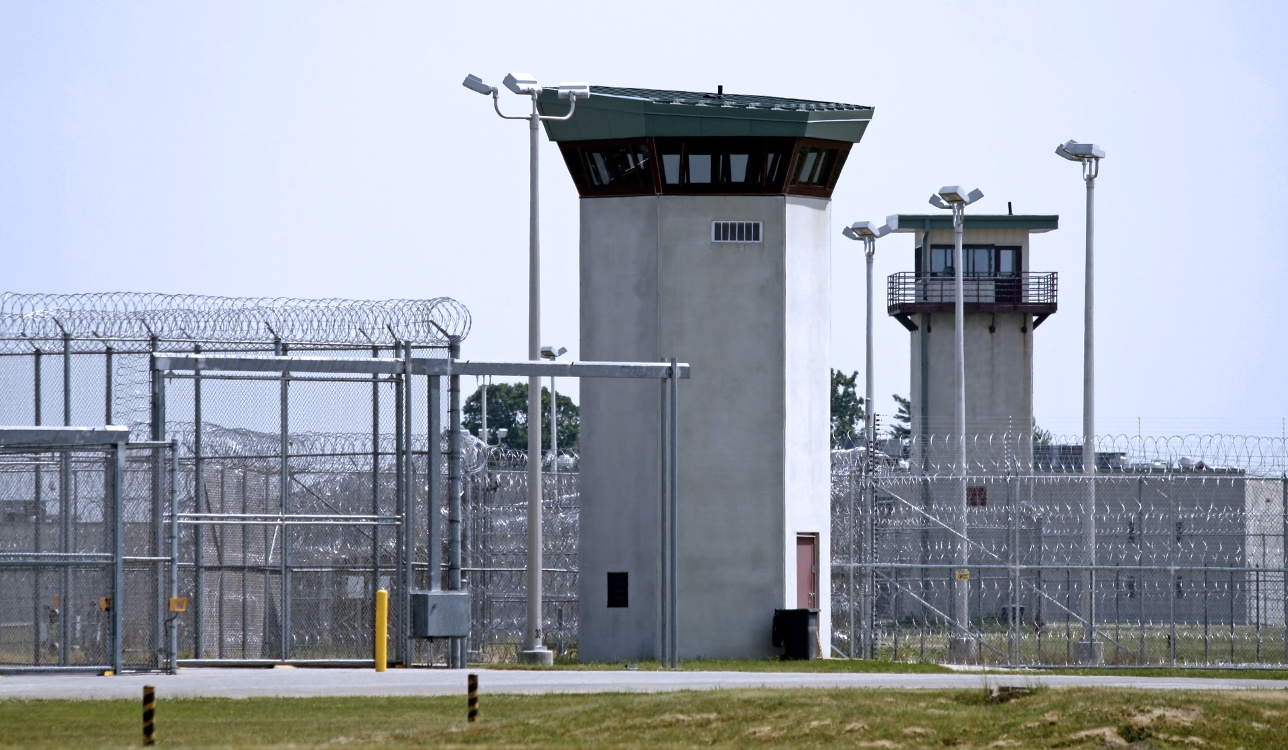Activism
The Folly of a Racialized Criminal Justice Reform Debate
America has the highest rate of incarceration in the world and—in state prisons—blacks are incarcerated at five times the rate of whites."

In the wake of the 2014 shooting of Michael Brown and the subsequent upheavals in Ferguson, Missouri, a number of political pundits implored Americans to engage in a “national conversation about race,” particularly as it pertained to racial disparities in the criminal justice system. These exhortations were understandable. America has the highest rate of incarceration in the world and—in state prisons—blacks are incarcerated at five times the rate of whites. America has a well documented history of subjecting blacks to police brutality, and reform advocates will often claim that this racially motivated mistreatment persists today.
Well intentioned activists seek to rectify this state of apparent racial injustice. However, almost four years after Ferguson, no federal legislation has been passed. While several states have enacted meaningful reforms, the system as a whole remains unaltered. What explains this failure? By all reasonable accounts, we have had the demanded ‘national conversation’ about race in the intervening years since Ferguson. Apparently, and perhaps predictably, that discussion has been unproductive.
Race as a Distraction and Means of Alienation
After high-profile incidents of putative police misconduct involving black men—e.g., Alton Sterling, Laquan Mcdonald, Walter Scott, and Philando Castile—a general sentiment emerged that such egregious treatment could only have befallen a black person. From this perspective, it strains credulity that a white male might be shot in the back while fleeing an officer, in the manner of Walter Scott.
However, there have been numerous comparable instances of police shooting white men that have resulted in allegations of police misconduct and wrongdoing, such as Daniel Shaver, Dylan Noble, Michael Parker, and James Boyd, among many others. These examples confound the theory that skin color somehow inoculates white men from instances of police brutality and the use of excessive force. However, the asymmetry in the volume of media coverage, coupled with the already racialized narrative surrounding police misconduct, creates a misleading impression that these are issues that afflict blacks exclusively, and this risks diminishing support—or at least agitation—for reform.
The standard race-based narrative also distorts our understanding of the history of the criminal justice system (and the drug war, in particular) as well as the causal forces responsible for its current condition. For instance, it is often noted that distribution of five grams of crack cocaine and distribution of 500 grams of powdered cocaine were, until relatively recently, both punishable by a five year mandatory minimum sentence. The standard explanation for this sentencing disparity is that it was a pretext for inflicting excessive punishment on blacks (who disproportionately use and deal crack) relative to whites (who disproportionately use and deal cocaine). This explanation, however, overlooks several important factors that contributed to the sentencing disparity. Firstly, during the crack epidemic of the 1980s, members of the black middle class and black political leaders agitated for an increased police presence in their neighborhoods and clampdowns on drug dealers.
Secondly, the race-based explanation for the sentencing disparity overlooks our societal misunderstanding of the pharmacology of drugs in general. A debate informed by political rhetoric and tabloid fear-mongering rather than science has resulted in a widespread tendency to overstate the harmful effects and addictive qualities of many drugs. Thirdly, the focus on the cocaine/crack disparity ignores other complicating examples. Methamphetamine is predominantly used and dealt by whites and the distribution of five grams of meth is also punishable by five years in prison. As Mike Riggs observed in an article for Reason, “With the passage of the Fair Sentencing Act in 2010, the minimum quantity of crack cocaine necessary for a five-year mandatory minimum was raised to 28 grams; the minimum quantity for methamphetamine remains five grams.”
A more well informed understanding of the history of the criminal justice system and relevant legislation would enable us to preempt and respond to social phenomena more effectively without recourse to moral panics over particular substances and disproportionately authoritarian and ineffective solutions. Race-oriented rhetoric only inflames emotions, alienates potential allies (who might have otherwise been sympathetic), and hinders our ability to defuse unfounded hysteria.

Racial Disparities Today
As regular readers of Quillette will already be aware, disparities between different demographics are not always accounted for entirely—or even mostly—by discrimination. After controlling for relevant variables—such as a prior criminal record, geographic differences (location/population density), etc.—social scientists have consistently found that disparities in the criminal justice system often collapse and approach parity.
A 1997 meta-analysis conducted at Harvard concluded that “findings on the processing of adult index crimes generally support” the non-discrimination thesis. A more concrete example of the mechanics of these confounding cultural factors can be found in a Bureau of Justice study which analyzed the disparity in drug arrests. The commonly expressed grievance is that while blacks and whites use drugs at similar rates, blacks are punished far more heavily for doing so. However, after controlling for numerous factors—type of drug used, location where the drugs were sold, frequency of drug use, and likelihood of reporting use to surveyors—the Bureau of Justice discovered that the gap in arrest rates greatly diminished.
Scott Alexander and Heather Mac Donald have also both published detailed surveys of racial disparities at multiple tiers of the criminal justice system. Although the discrepancy in the rate of drug arrests does not appear to be primarily fueled by racial bias, the configuration of circumstances (e.g.: dealing drugs outside in urban areas with a higher police presence due to higher homicide rates) that lead to the inflated black arrest rate is by no means just. But this reality only enhances the moral imperative to reevaluate the efficacy of the war on drugs.
I should caution that some of the cultural phenomena giving rise to these disparities are outgrowths of brutal historical racial persecution and a lack of opportunity. For instance, structural factors, such as a lack of education and employment options, might help us to understand blacks’ disproportionate rates of violent crime. Similarly, cultural features prevalent in some black communities are neither endogenous nor wholly unrelated to the backdrop of structural racism. So America’s history of iniquitous subjugation and disenfranchisement of black people should certainly not be disregarded in these analyses. The mistake is to assume that America’s troubled history of race relations are the beginning and end of all relevant discussion.

Actionable and Efficacious Policy Solutions
Even if we were to grant—arguendo—that America is still as fundamentally racist as Ta-Nehisi Coates and his ideological fellow-travelers claim, a race-centric discourse only leads to dead-end policy outcomes and precludes a more sober consideration of potentially auspicious avenues of action. Policy solutions that focus exclusively on race tend to be ineffective or counterproductive: mandatory diversity training does not work and simply hiring more black police officers doesn’t appear to significantly reduce police wrongdoing or avoidable shootings.
Furthermore, activists’ inclination to impute racial animus to all aspects of the criminal justice system forecloses careful examination of more propitious approaches. For example, in response to the 2014 death of Eric Garner, it might have been more useful to have focused on the NYPD’s chokehold policy and the reason for Garner’s confrontation with law enforcement in the first place than on NYPD officer Daniel Pantaleo’s alleged racism. This was what Senator Rand Paul elected to do, astutely observing that NYC’s high cigarette tax rate had helped to create a black market and a consequent clampdown on dealers and buyers. Senator Paul was widely mocked for his comments by progressive commentators—of course Republicans want to make everything about taxes!—but the point nevertheless deserved consideration. A surfeit of laws inevitably requires a higher level of enforcement, which in turn increases the number of civilian-law enforcement interactions and the probability of violent altercations and civil liberties violations.
If progressives are reluctant to acknowledge arguments like these, it may be because doing so would require them to confront—and possibly reconsider—their own paternalistic and regulatory impulses which have failed to bring about effective policy solutions. A universalist, colorblind, and civil libertarian approach focused on a dispassionate assessment of causes and outcomes is not only more likely to produce better results; it is also more conducive to unity, coalition-building, and a more accurate apprehension of the current state of affairs and its requisite fixes.
Writing in Reason magazine last year, Thaddeus Russell put his finger on the crux of the issue:
Today, there are more than 500,000 white inmates in state or federal prisons, and the incarceration rate for whites is 465 out of 100,000—higher than the rates of Russia, China, India, Brazil, Mexico, Rwanda, and Iran. Even if we freed all black and Latino inmates tomorrow, the United States would have the fourth-largest prison population in the world… racial reductionism allows no way to understand this—and no way to end it.






